In 1941, Betty White joined the American Women's Voluntary Services and spent the next four years driving a delivery truck to support the war effort.
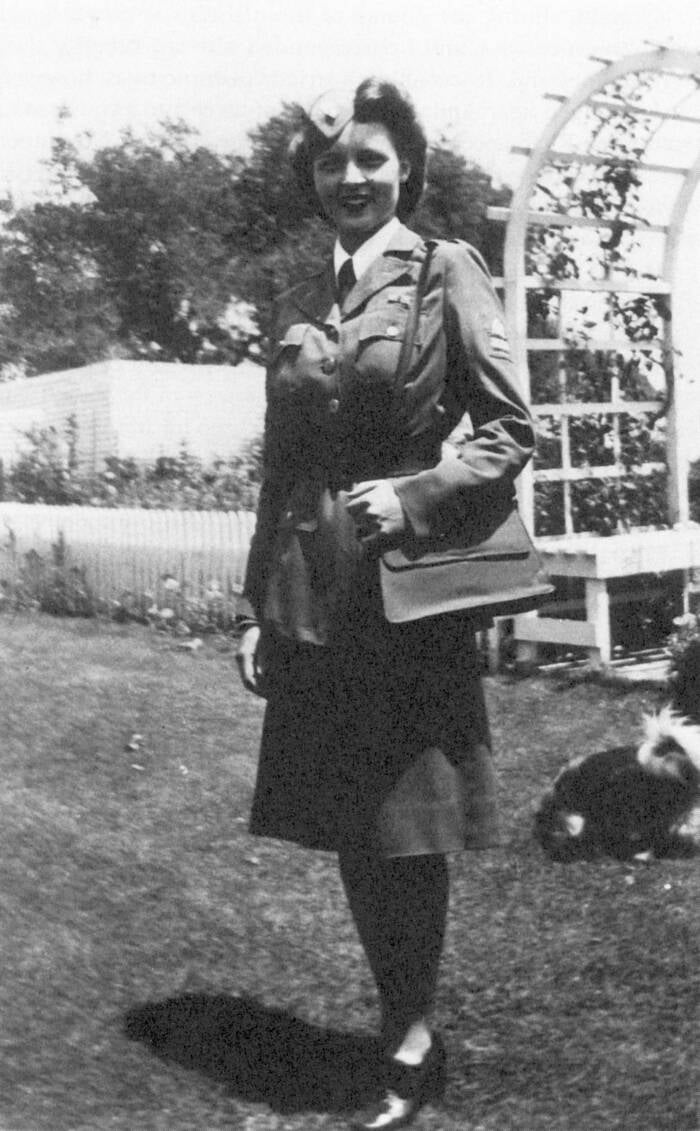
Betty White Ludden TrustBetty White in her American Women’s Voluntary Services uniform during World War II.
Most people would likely think of Betty White as the beloved comedic actor from The Golden Girls, but just before she broke into the entertainment industry, she had a different job entirely: driving a truck during World War II. Betty White’s World War II service didn’t take her to the front lines, but she still spent four years volunteering for the war effort.
White served with the American Women’s Voluntary Service (AWVS). Volunteers with the AWVS took on various roles in the war as mechanics, drivers, aerial photographers, and more.
White, who was just 19 at the time she joined the AWVS, was assigned a job driving a post exchange supply truck to various barracks and armories in Los Angeles. She also worked to lighten the spirits of troops who were preparing for deployment by visiting recreation centers to socialize, play games, and attend dances with them. She later called this period of her life “a strange time and out of balance with everything.” Of course, White was eventually able to pursue her ambitions and became a national treasure.
Betty White’s service during World War II only solidifies that title.
How The Women’s Voluntary Services Aided The War Effort
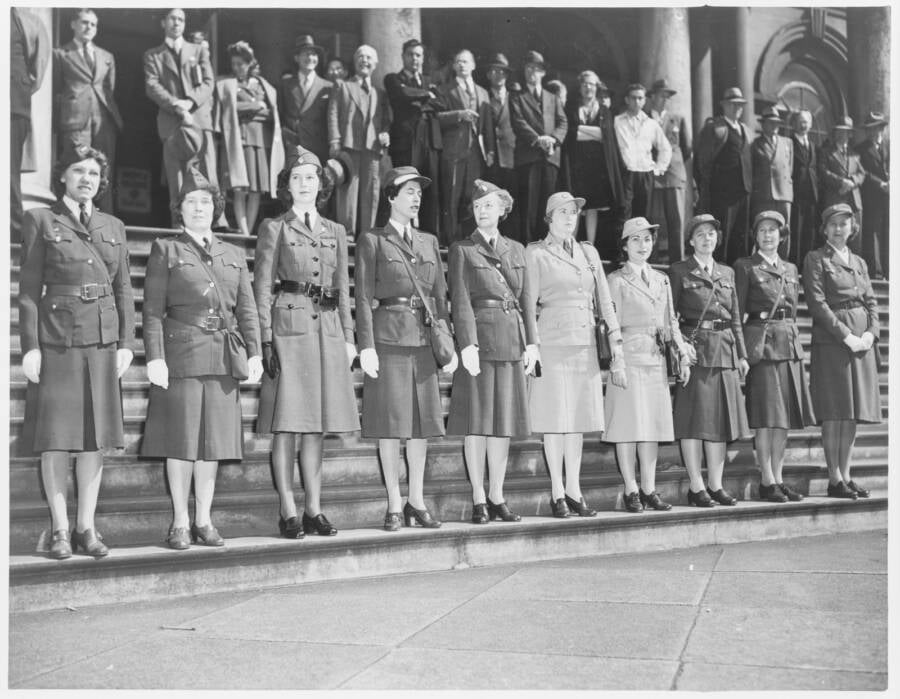
Library of CongressMembers of the American Women’s Voluntary Services in uniform.
When World War II broke out in Europe, women were equally compelled to aid in the war effort, even if they could not serve as directly as men on the front lines. The Women’s Voluntary Services (later referred to as the British Women’s Voluntary Services) was founded on May 16, 1938, by Stella Isaacs, Marchioness of Reading.
The Lady Reading established the WVS at the request of the British government, specifically the Home Secretary Sir Samuel Hoare, with the vision of creating a voluntary organization that would mobilize women across the country to support the nation during times of crisis. World War II was on the horizon — and the WVS was soon put to the test.
Women of the WVS helped to organize evacuations, provided emergency food supplies, and supported the armed forces. In all, more than one million women volunteered to help.
Two years later, as the war raged on and it seemed ever more likely that the United States would be called to arms, a woman by the name of Alice Throckmorton McLean founded the American Women’s Voluntary Services. The AWVS was modeled closely after its British counterpart, working to prepare the United States for the possibility of war.
By the time of the Pearl Harbor attack in December 1941, the AWVS had more than 18,000 members ready to assist in national defense efforts. And soon, 19-year-old Betty White would be among them.
Betty White’s World War II Service
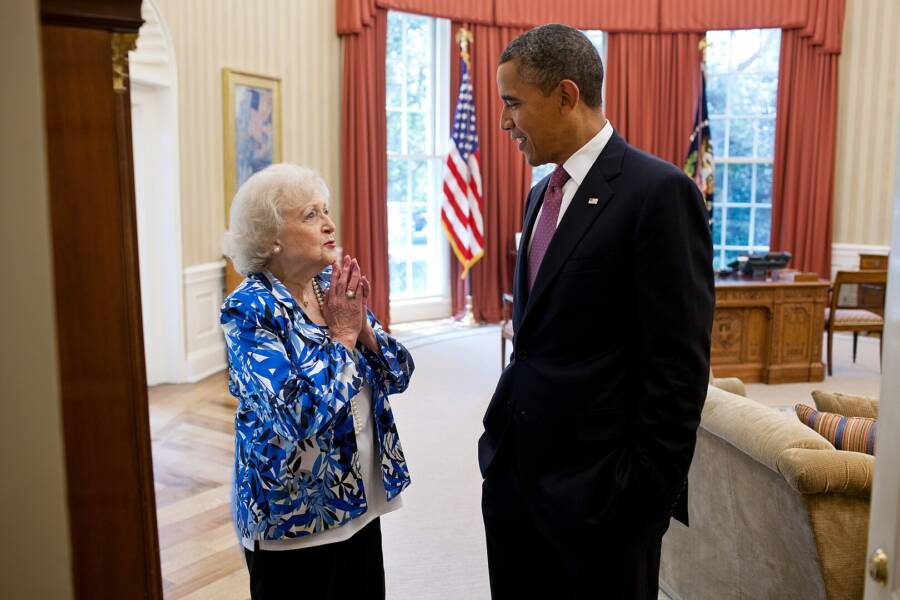
Public DomainBetty White with President Barack Obama in the Oval Office in 2012.
The AWVS had already been growing in number when the bombs fell on Pearl Harbor, but the attack on home territory ignited a fire in the American public. Men prepared to ship overseas and fight, and although women could not do the same, they still wanted to contribute. Many took over factory jobs that had been left open with the men away, while others volunteered with the AWVS. Some 350,000 women had signed up by 1943.
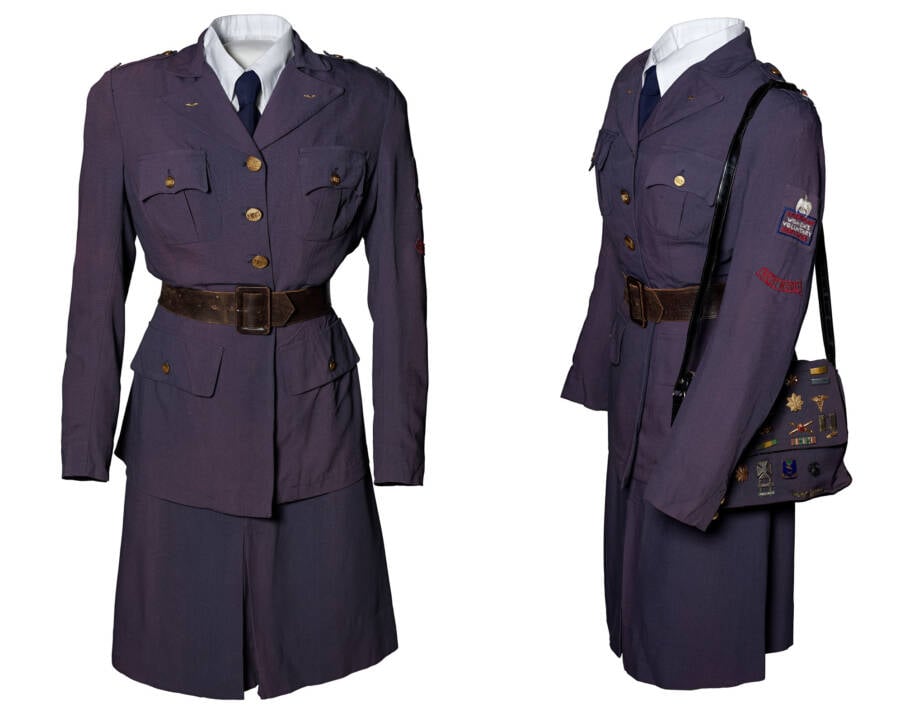
National Museum of American HistoryBetty White’s World War II AWVS uniform.
Despite her dreams of becoming an actress, White put her plans on hold to join the AWVS as well. She was assigned to motor transport services and worked as a driver for the entirety of the war until 1945.
In her 1995 memoir Here We Go Again, White wrote that she “drove a PX truck, carrying toothpaste, soap, candy, etc., to the various gun emplacement outfits that had been set up in the hills of Hollywood and Santa Monica.”
“It was a strange time and out of balance with everything,” White told Cleveland Magazine in a 2010 interview, “which I’m sure the young people are going through now. We’ll never learn. We’ll never learn.”
At night, White, dressed in her blue uniform, would attend dances and events at recreation halls throughout the San Fernando Valley, chatting, dancing, and playing games with servicemen who were on leave or preparing to deploy.
“Ever hear of the age of innocence?” White asked. “Believe me, that was it.”
Betty White’s World War II Shoulder Bag Tells The Story Of Her Life During Wartime
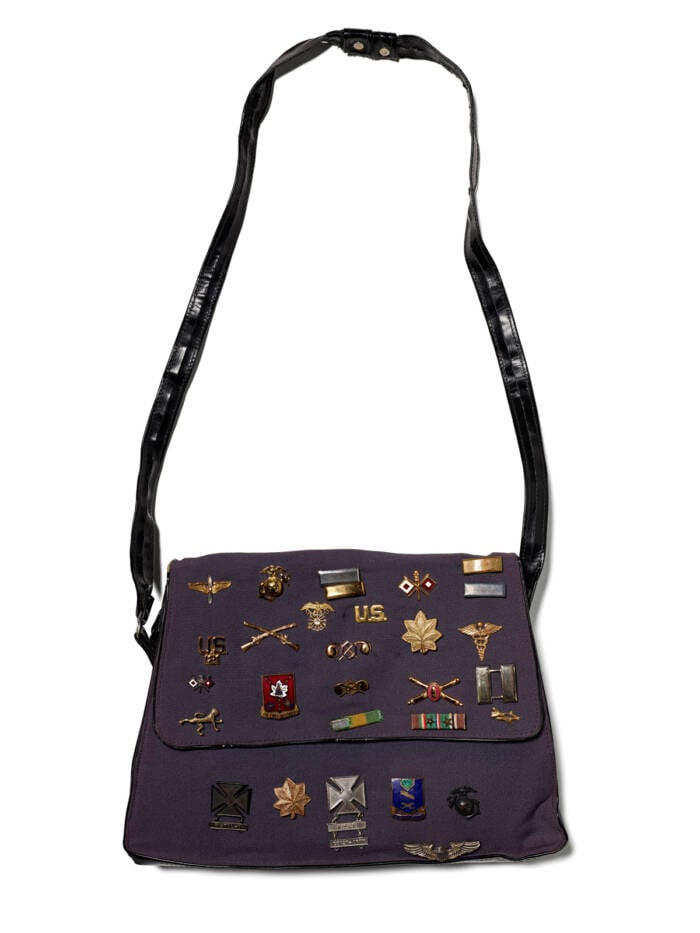
National Museum of American HistoryBetty White’s World War II shoulder bag, carried with her during her volunteer service.
While Betty White only ever spoke briefly of her experience during World War II, her shoulder bag, now at the National Museum of American History, reveals more information about that period of her life.
The bag itself was decorated with 29 different pieces of military insignia spanning all branches, likely belonging to the servicemen White had danced and chatted with before they went overseas. The bag’s contents were very much the same. There were more pieces of uniform insignia, including some from allied nations, such as a Free France badge, a Soviet Red Army hat badge, and a British Army officer’s rank star. There was also a note listing the names of the service members who had gifted her the insignia.
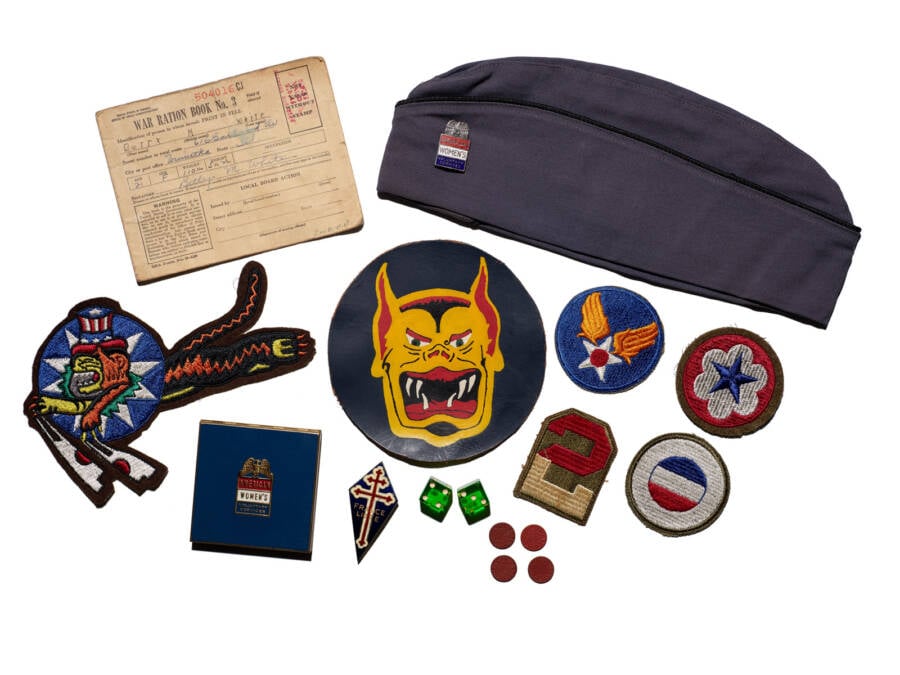
National Museum of American HistoryPins and insignias from Betty White’s World War II shoulder bag.
White also carried items that would have been applicable in the field, such as blank V-mail letters, gasoline ration stamps, food ration tokens, War Ration books with stamps, and other booklets for War Savings and Defense Savings bonds.
Among the most interesting items, however, were those that were personal to White. During the early years of the war, Betty White had been engaged to Army Captain Paul M. Popple, and the two wrote frequently. However, White broke off their engagement with a letter in 1944.
In 1945, she married a different Army officer by the name of Frederick “Dick” Barker, a pilot who received 10 Air Medals for his service, having completed 50 combat missions with one aerial kill to his credit. The marriage was unfortunately short-lived, though, as the two divorced in December 1945, just five months after they wed. Barker wanted to work on a farm in Ohio, and White had far greater dreams.
Popple and Barker were not the only servicemen infatuated with Betty White during World War II, though. A photograph in her bag — of a man later identified as Captain Wayne L. Daniel — was signed, “Betty — I love you — for always. Wayne.”
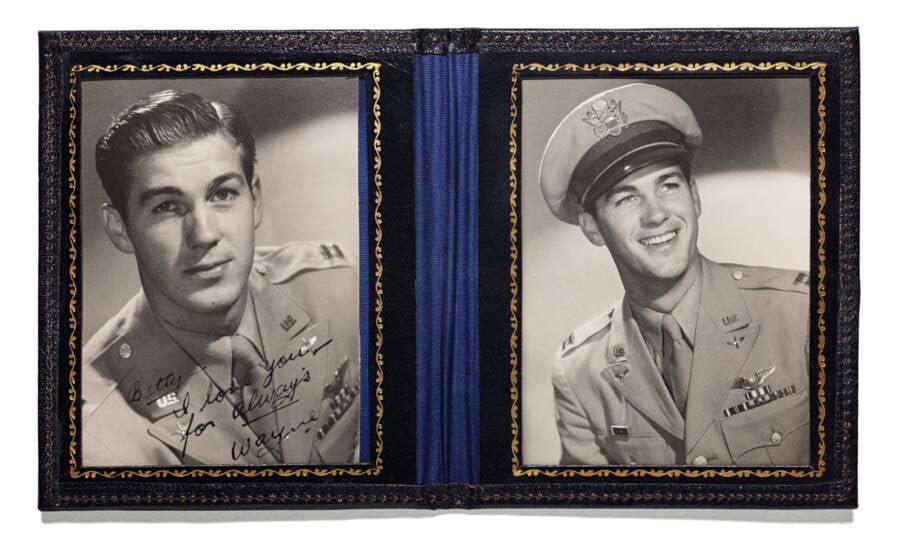
National Museum of American HistorySigned photographs of Captain Wayne Daniel addressed to Betty White during World War II.
Daniel and White never married, so the exact nature of their relationship is still a mystery. After the war, Betty White married TV personality Al Ludden. Regardless, it was not difficult to see why these servicemen had loved Betty White so much. You’d be hard-pressed to find anyone who didn’t love the woman.
After White’s death on Dec. 31, 2021, the U.S. Army commemorated the actress and war volunteer in a statement posted to Twitter: “We are saddened by the passing of Betty White. Not only was she an amazing actress, she also served during WWII as a member of the American Women’s Voluntary Services. A true legend on and off the screen.”
After reading about Betty White during World War II, read about the Free Arabian Legion, the Black and Muslim soldiers who fought for the Nazis. Then, learn about the Donut Dollies, the female volunteers who delivered treats to soldiers on the front lines.





